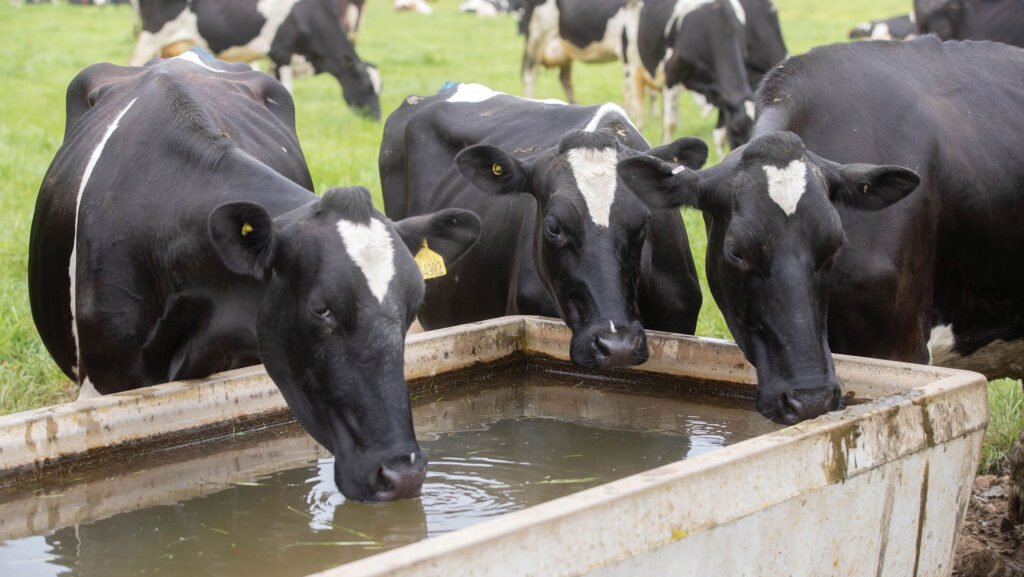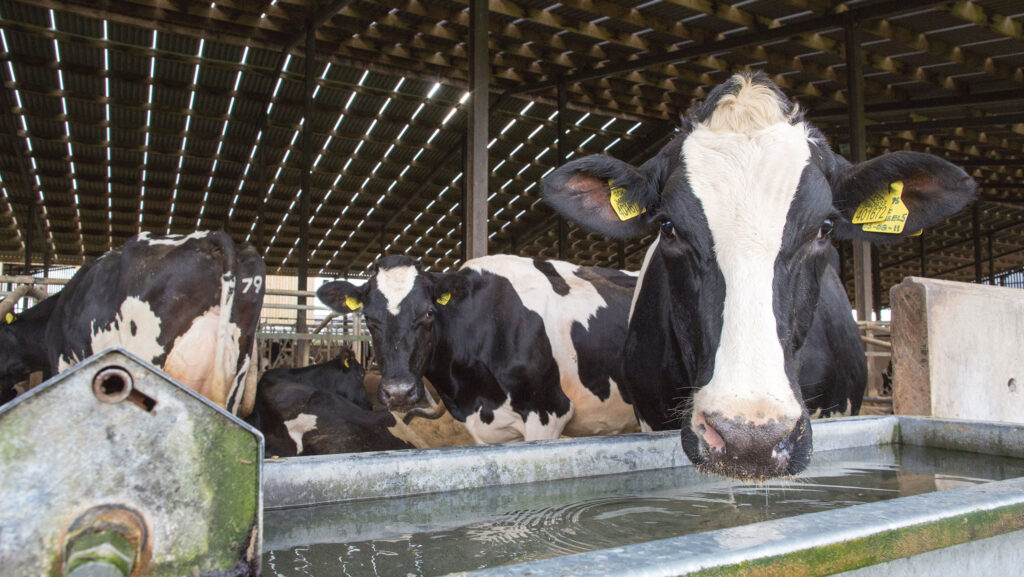5 tips to help ensure dairy cows drink enough water
 © Tim Scrivener
© Tim Scrivener Since a cow’s milk yield is directly linked to the volume of water in her body, keeping intakes at an optimum drives herd productivity. Yet many dairy farms fall short of achieving constant intakes because of changes in water palatability, increased levels of bacterial contamination and poor trough accessibility.
See also: How to prevent heat stress in grazing cows
Addressing all three issues is relatively simple, suggests vet Ben South, who specialises in water hygiene improvements in dairy, poultry and pig systems.
“Water often receives little attention on dairy farms, not because it is forgotten, but because there are so many other variables to productivity and health that dairy farmers need to think about,” suggests Ben, a director at water sanitation company FarmWater.
His work in the poultry sector, where high water-quality standards are critical to gut health and feed conversion efficiency, has informed his approach to driving intakes on dairy farms.
He offers some of his top tips on how to satisfy the daily water demand of dairy cows.
1. Ensure water troughs are accessible
As cows are very particular about when and where they drink, it is no coincidence that they often favour specific troughs.
Accessibility is one reason for this, so trough location should be carefully considered.
“Frequently, water troughs on farms may be sited where they were 30 years ago, tucked away in sheds with restricted access because that is where the water source came in,” Ben observes.
“I also believe yard troughs are often too small.”
He advises use of stand-alone troughs that allow cows easy access from multiple sides to cope with peak drinking times.
“When cows are coming off the milking line, you want to avoid them standing around, waiting to drink, crowding around one trough where dominant animals will probably push off the subordinates,” he says.
Even if those subordinate cows consume the water they need, that situation means greater standing time for drinking and less time for feeding, rumination and lying down.
“By ensuring more consistent intakes during the day, you avoid situations where cows are trying to suck up as much water as they can after they have been milked,” he adds.
These cows “know they are not going to be able to get back to the trough in half an hour’s time when other cows are emerging from the parlour”.
If all troughs are being used, cow flow improves, and water stress is reduced.
2. Make sure water is palatable
The taste of borehole water is predominantly dictated by the macro-mineral content.
This varies across the UK and throughout the seasons. Iron, copper, nitrates and sulphur levels are all key factors.
Ben advises farmers to have samples taken to assess mineral content.
Heavy metals and bacterial contamination have the greatest impact on water palatability.
These can be reduced or removed through micro-filtration and water hygiene solutions, such as use of chlorine dioxide, a complete biocide that prevents algae from growing in systems and kills unwanted pathogens.
The most effective point to achieve this is at the water source.
“If you are drawing up contaminated water from the ground, storing it and letting that run through the farm system, you risk biofilm growth and increasing bacterial contamination that can affect calf and herd health,” Ben warns.
“It is much more cost efficient to clean water at one point rather than trying to clean the water at every single outlet on the farm.”
© Tim Scrivener
3. Avoid overfilling troughs
Water is at its cleanest when it is flowing and oxygenated. As a cow starts drinking, fresh water is introduced to troughs, encouraging flow and increasing oxygen.
By not over-filling troughs, they can replenish more quickly.
However, this can only be achieved if cows have good access to multiple troughs.
“If single troughs are favoured, you risk them drying out,” he says, adding that good water pressure with adequate pipe size will help refill times during peak use.
Troughs that get used the most tend to be the cleanest in terms of algae growth but will need tipping more regularly because of feed ingress.
4. Regularly clean troughs
It is widely accepted that bovine TB can be spread in water systems by cows sharing water with wildlife.
Yet many farms fail to drain their troughs on grazing platforms when they are not in use.
Ben says it makes no sense to allow water to sit in a trough all winter, and to not refresh it before turnout.
“Field troughs are readily shared with wildlife such as a badgers and deer,” he points out.
Troughs should also be drained and scrubbed periodically during the grazing season. “It should without doubt be a protocol in a TB mitigation programme,” he says.
For large troughs with no bung, he advises tying up the ballcock to let water flow through the pipes.
If there is a water hygiene solution in the system, this product will be drawn through to kill pathogens, viruses and algae.
5. Take periodic water samples
Testing borehole water for mineral content and bacterial contamination is a relatively cheap surveillance option for providing a good base line on water quality.
Ben advises taking multiple samples at strategic places across the farm.
Doing so quarterly also gives farmers a better understanding of how contamination levels change throughout the year.
“Borehole water fluctuates during the season. For example, when there is heavy rain after a dry spell, there is a lot of wash-off down into the ground water and we can see increased levels of nitrogen and bacterial growth,” he says.
“If you are running a borehole, regular sampling is important in understanding how seasons may affect water quality and what might be needed to address it,” he adds.

